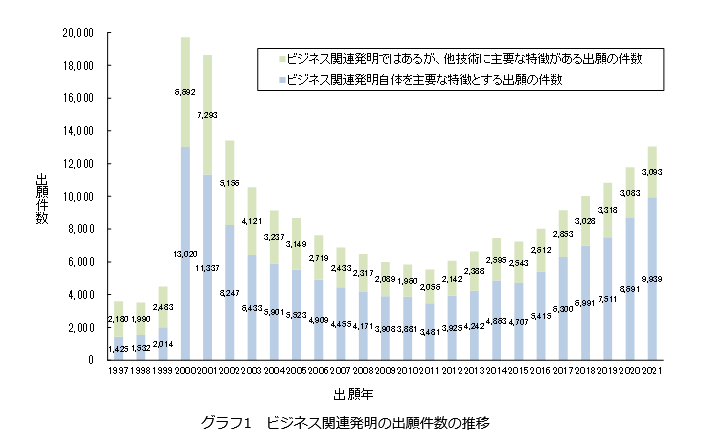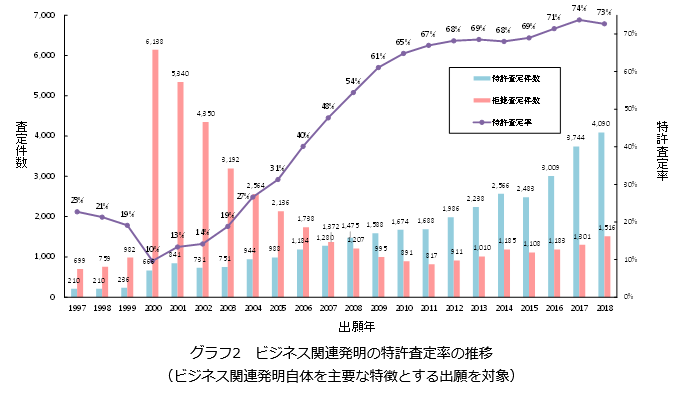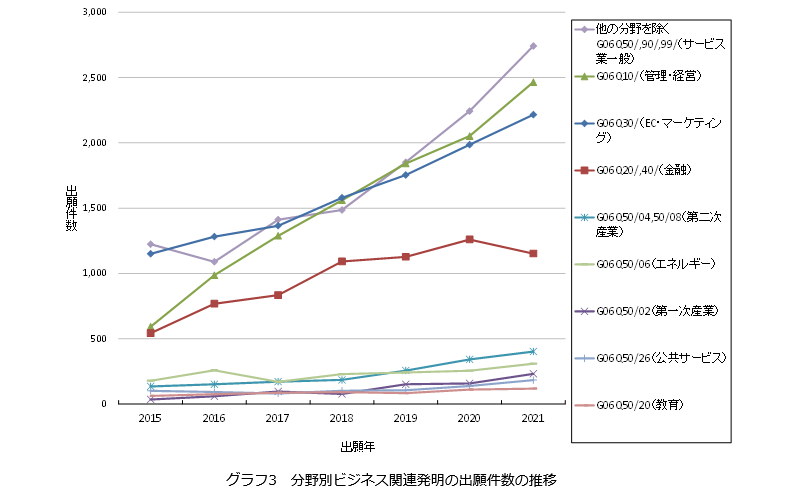目次
1月号【総合】ニュースレター

グローバル知財戦略フォーラムの開催
特許庁と独立行政法人工業所有権情報・研修館は、2024年1月25日に「グローバル知財戦略フォーラム2024」を開催する。「グローバル知財戦略フォーラム」は、ビジネスと知的財産を取り巻く環境が大きく変わる中、経営や知財戦略に関する国内外の最新のトピックを紹介することで、 経営戦略と連携した知財戦略の構築に資する情報提供を行うことを目的としたフォーラムである。
「グローバル知財戦略フォーラム」は特許庁と独立行政法人工業所有権情報・研修館の共催で2015年から開催しており、幅広い方々にご参加いただけるよう現地開催に加え、ライブ配信を行い、期間限定のアーカイブ配信も行うとのこと。
プログラムによると、2つの基調講演と3つのパネルディスカッションのほか、ランチセッションや交流会(名刺交換会)が行われる。
AI関連発明に関する中国との比較研究について
特許庁は12月1日、日中両国のAI関連発明比較研究報告書を公表した。
この報告書は、AI関連発明の審査実務に関する類似点と相違点を明示するべく、日本国特許庁と中国国家知識産権局が、AI関連発明に関して両国の審査実務の比較研究を行った結果をまとめたものである。これにより、両者でのAI関連発明に対する現在の審査実務の実情がある程度明らかになったと言える。この報告書として、「AI関連発明比較研究報告書(英文)」、「AI関連発明比較研究報告書(和文仮訳)」、「中国とのAI関連発明に関する比較研究 得られた知見の概要」の3つが公表されている。
「中国とのAI関連発明に関する比較研究 得られた知見の概要」はおおよそ以下のとおりである。
まず、発明該当性については、中国では、「技術的特徴」の有無が重要視され、「技術的特徴」が含まれない場合には専利法25条1項によって発明該当性がないと判断される。さらに、技術的課題、技術的手段、技術的効果の3つの重要な技術的要素を検討し、全体として専利法2条2項に記載された技術的解決策に属するか否かを判断する。
一方、日本では、「ソフトウエアとハードウエア資源とが協働することによって、使用目的に応じた特有の処理装置又はその動作方法が構築」されていると認められる場合には、当該使用目的が技術的か否かは判断されることなく発明該当性が認められる。
また、進歩性については、中国では、「アルゴリズム的特徴」のうち、機能的に相互にサポートし合い、技術的な特徴との相互作用関係を有するものを、全体として技術的特徴と共に考慮する。
一方、日本では、 発明特定事項を「技術的特徴」と「非技術的特徴」に分けることなく全て考慮して進歩性を検討する。
また、実施可能要件(開示の十分性)/サポート要件については、AI関連発明に関する判断結果は概ね一致する 。
また、実施可能要件については、請求項に上位概念の発明が記載されており、発明の詳細な説明にその上位概念に含まれる「一部の下位概念」についての実施の形態のみが実施可能に記載されている場合、日本では実施可能要件を満たしていないと判断するが、中国では実施可能要件を満たしていると判断するという、一般的な判断手法の相違が明らかになった。
なお、本比較研究はAI関連発明の審査実務に焦点を絞っている点に注意する必要がある。また、本比較研究の結果は、両特許庁に対して法的拘束力を与えるものではないとのことである。
詳細は下記の特許庁ホームページをご覧ください。
https://www.jpo.go.jp/news/kokusai/cn/ai_report_2023.html
ビジネス関連発明の最近の動向について
特許庁は11月、ビジネス関連発明の最近の動向についての調査結果を発表した。
この調査においては、ビジネス関連発明とは、ビジネス方法がICT(Information and Communication Technology:情報通信技術)を利用して実現された発明であるとされ、具体的にはIPC又はFIとしてG06Qが付与された特許出願であるとされている。
調査結果のいくつかを紹介すると、国内のビジネス関連発明の特許出願件数(グラフ1)を見ると、2000年に生じた出願ブーム後の減少傾向は2012年頃から増加に転じており、2021年は13,032件の出願があった。また、当初低調であった特許査定率(グラフ2)は年々上昇しており、近年は技術分野全体の特許査定率と同程度の70%台で推移している。


また、分野別のビジネス関連発明の出願件数の推移(グラフ3)を見ると、2021年に出願されたビジネス関連発明のうち上位を占めるのは、次の3分野である。
(1)他の分野を除くG06Q50/,90/,99/(サービス業一般(宿泊業、飲食業、不動産業、運輸業、通信業等))
(2)G06Q10/(管理・経営(社内業務システム、生産管理、在庫管理、プロジェクト管理、人員配置等))
(3)G06Q30/(EC・マーケティング(電子商取引、オークション、マーケット予測、オンライン広告等))

詳細は下記の特許庁ホームページをご覧ください。
https://www.jpo.go.jp/system/patent/gaiyo/sesaku/biz_pat.html#anchor2-2
Newsletter translated into English

Global IP Strategy Forum
The JPO and the National Center for Industrial Property Information and Training (INPIT) will hold the “Global IP Strategy Forum 2024” on January 25, 2024. The “Global IP Strategy Forum” aims to provide information that contributes to the establishment of IP strategies that are linked with management strategies by introducing the latest domestic and international topics on management and IP strategies in the midst of a drastically changing environment surrounding business and intellectual property.
The “Global IP Strategy Forum” has been held since 2015 under the joint sponsorship of the JPO and the INPIT, and in addition to the on-site event, it will be live-streamed and archived for a limited time so that a wide range of people can participate.
According to the program, there will be two keynote speeches and three panel discussions, as well as a lunch session and a social event to exchange business cards.
Comparative Study on AI-related Inventions with China
On December 1, the Japan Patent Office (JPO) published a report on a comparative study of AI-related inventions in China and Japan.
This report summarizes the results of a comparative study conducted by the JPO and the China National Intellectual Property Administration (CNIPA) on the examination practices of AI-related inventions in the two countries in order to clarify similarities and differences in the examination practices of AI-related inventions. This report clarifies to some extent the current examination practices for AI-related inventions in the two countries. For the reports the following three documents have been published: “Comparative Study Report on AI-related Inventions (English)”, “Comparative Study Report on AI-related Inventions (Provisional Japanese Translation)”, and “Comparative Study on AI-related Inventions in China: Summary of Findings”.
The “Comparative Study on AI-related Inventions in China: Summary of Findings” is roughly as follows.
First, as to the eligibility of an invention, in China, the existence of “technical features” is regarded as important, and if no “technical features” are included, the invention is deemed lack eligibility according to Article 25.1 of the Chinese Patent Law. In addition, the three important technical elements of technical problem, technical means, and technical effect are examined to determine whether the invention as a whole falls under a technical solution as listed in Article 2.2 of the Chinese Patent Law.
On the other hand, in Japan, if a “method for establishing an specific operating method of an information processing device according to intended use through cooperation of software and hardware resources” is recognized, the invention is deemed eligible without determining whether the purpose of use is technical or not.
As for inventive step, in China, “algorithmic features” that functionally support each other and have an interactive relationship with technical features are considered together with technical features as a whole.
On the other hand, in Japan, inventive step is examined by considering all matters specifying the invention without dividing them into “technical features” and “non-technical features”.
Regarding the enablement requirement (sufficiency of disclosure)/support requirement, the results of judgments on AI-related inventions are generally consistent.
For the enablement requirement, a difference in the general method of judging is found: if a claim is directed to a generic concept but embodiments only of “part of more specific concepts” encompassed by the generic concept are stated in the description in a manner such that only the specific concepts can be carried out, the enablement requirement is not satisfied in Japan. In China, however, the enablement requirement is deemed satisfied.
It should be noted that this comparative study focuses on the examination practice of AI-related inventions. Also, the results of this comparative study are not legally binding on the two patent offices.
For more information, please see the JPO website:
https://www.jpo.go.jp/news/kokusai/cn/ai_report_2023.html
Recent Trends in Business-Related Inventions
In November, the Japan Patent Office (JPO) released the results of a survey on recent trends in business-related inventions.
In this survey, business-related inventions are defined as inventions in which a business method is realized using ICT (Information and Communication Technology), specifically patent applications with G06Q as IPC or FI.
To introduce some of the findings of the survey, looking at the number of patent applications for business-related inventions in Japan (Graph 1), the downward trend after the application boom in 2000 changed into an increase around 2012, with 13,032 applications filed in 2021. In addition, the patent grant rate (Graph 2), which was initially low, has been increasing every year, and in recent years has been in the 70% range, the same level as the patent grant rate for the entire technology field.


Looking at the number of applications for business-related inventions by field (Graph 3), the following three fields account for the largest number of business-related inventions filed in 2021.
(1) G06Q50/,90/,99/ (General service industry (accommodation, catering, real estate, transportation, communication, etc.) excluding other fields)
(2) G06Q10/ (Administration and management (internal business systems, production control, inventory control, project management, personnel allocation, etc.))
(3) G06Q30/ (E-commerce and marketing (e-commerce, auctions, market forecasting, online advertising, etc.))

For more information, please see the JPO website:
https://www.jpo.go.jp/system/patent/gaiyo/sesaku/biz_pat.html#anchor2-2

